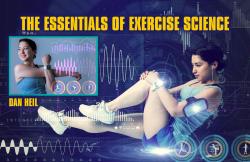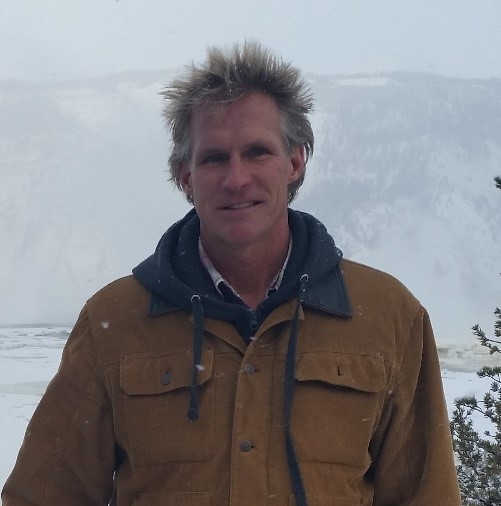Essentials of Exercise Science
Author(s): Daniel Paul Heil
Edition: 1
Copyright: 2020
The undergraduate academic field of Exercise Science is one that focuses broadly on the roles of physical activity, exercise, and sport on human health and wellbeing throughout the lifespan. While the field of Exercise Science has existed in some form since the 1970’s, there is continuing need for new academic resources that present updated perspectives on curricular content, as well as content that takes advantage of evolving on-line resources. The Essentials of Exercise Science is an on-line text with an updated approach to incorporating both in-text web links and videos for students to explore and extend the reach of a traditional book. This text was written for students who have just started, or are planning to start, an undergraduate major in Exercise Science. As such, the text includes a historical description of major events during the 20th century that led to the academic field of Exercise Science. There is another chapter completely dedicated to explaining how an undergraduate degree in Exercise Science can be used as a launchpad for many of the health careers in which we find our students pursuing. Integrated within this same chapter is an explanation of how certifications, licensure, and registration effects each health career along with relevant web-links to professional organizations for each health career. Given the broad backgrounds of many incoming college students, this text also includes a chapter that broadly introduces many commonly used and referenced terms and concepts in human anatomy and physiology. The text then focuses on a few of the most common of Exercise Science subdisciplines (Exercise Physiology, Biomechanics, Sports Nutrition), as well as an exciting list of “Hot Topics” that often cross several Exercise Science disciplines. Depending upon the use of web-links and videos by instructors and students, the text content can be easily scaled for brevity or an in-depth lecture of almost any topic.
As of 2020, there are several supplementary materials available to both instructors and students for this text. For instructors there are quizzes imbedded in each chapter that are integrated with the KHQ Study App and Flashcards. Students can use both the KHQ Study App and Flashcards to review the text material for each chapter and then take the corresponding chapter quiz, the latter of which is a random subset of questions from the KHQ Study App. There are also four “Projects” which are assignments that students do outside of lecture time that are designed to emphasize concepts discussed in lecture – Health & Wellness Certifications; Physiological and Perceptual Responses to Aerobic Exercise; Self-Assessment of MVPA Habits; Pre-Exercise Health Risk Screening and Risk Classifications. For instructors, these projects come with a suggested grading key to be used by those who are grading the projects.
Preface
Chapter 1 Introduction to Exercise Science
What is Exercise Science?
Historical Origins of Exercise Science.
1970’s Running Boom.
The Harvard Fatigue Lab.
The American College of Sports Medicine (ACSM).
Chapter 2 Careers in Exercise Science
Certification, Licensure, and Registration.
Health Professions for the Exercise Scientist.
Fitness Professional.
Group Fitness Instructor.
Personal Trainer.
Advanced Personal Trainer.
Strength and Conditioning Coach.
Athletic Training.
Physical Therapy.
Occupational Therapy.
Clinical Exercise Physiology.
Physician Assistant.
Sports Medicine.
Sports Nutritionist.
Research and Graduate School in Exercise Science.
Chapter 3 Overview of Anatomy and Physiology
Introduction.
Organization of the Human Body.
The Skeletal System.
The Muscular System.
The Nervous System.
The Endocrine System.
The Cardiovascular System.
The Respiratory System.
The Metabolic Systems.
Chapter 4 Hot Topics in Health and Fitness
Physical Activity and Health.
What is Physical Fitness?
Guidelines for Aerobic Exercise Training.
Neuromotor Training Guidelines.
Guidelines for Resistance Training.
Health Risk Screening.
Body Composition Assessment.
High Intensity Interval Training (HIIT).
Lactate Threshold Testing.
Body Weight Management.
Chapter 5 Exercise Physiology
Introduction to Exercise Physiology.
The Metabolic Systems.
The Cardiovascular Systems.
The Pulmonary Systems.
The Musculoskeletal System.
Chapter 6 Biomechanics
Introduction to Biomechanics.
Kinematic Descriptions of Human Movement.
Kinetics and Human Movement.
Hot Topics in Biomechanics.
Chapter 7 Sports Nutrition
Introduction to Sports Nutrition.
Basic Nutrients Categories.
Measurement and Interpretation of Nutrient Intake.
Dan Heil, a professor in applied exercise physiology in the Department of Health and Human Development at Montana State University, has been awarded Fellow status by the American College of Sports Medicine (ACSM) and the Research Consortium of AAHPERD, and has served as both President and Annual Conference Director for the Northwest Chapter of the ACSM. Dr. Heil’s research tends to focus on determinants of human health, energy expenditure, and work performance during free-living, recreational, occupational, and sport-related activities. As such, his research often includes the use of wearable electronic monitoring devices, novel analytical strategies, as well as the integration of mathematical and statistical modeling. As of 2020, Dr. Heil has published over 50 peer-reviewed journal articles (most as first author) and over 150 peer-reviewed published research abstracts, but The Essentials of Exercise Science is his first book. Dr. Heil’s research interests are often inspired by his own personal interest and participation in a variety of sports that include triathlons, cross country skiing, open water swim racing, and taekwondo.
NOTE: Photo credit to Cecile Heil (Yellowstone National Park, MT).
The undergraduate academic field of Exercise Science is one that focuses broadly on the roles of physical activity, exercise, and sport on human health and wellbeing throughout the lifespan. While the field of Exercise Science has existed in some form since the 1970’s, there is continuing need for new academic resources that present updated perspectives on curricular content, as well as content that takes advantage of evolving on-line resources. The Essentials of Exercise Science is an on-line text with an updated approach to incorporating both in-text web links and videos for students to explore and extend the reach of a traditional book. This text was written for students who have just started, or are planning to start, an undergraduate major in Exercise Science. As such, the text includes a historical description of major events during the 20th century that led to the academic field of Exercise Science. There is another chapter completely dedicated to explaining how an undergraduate degree in Exercise Science can be used as a launchpad for many of the health careers in which we find our students pursuing. Integrated within this same chapter is an explanation of how certifications, licensure, and registration effects each health career along with relevant web-links to professional organizations for each health career. Given the broad backgrounds of many incoming college students, this text also includes a chapter that broadly introduces many commonly used and referenced terms and concepts in human anatomy and physiology. The text then focuses on a few of the most common of Exercise Science subdisciplines (Exercise Physiology, Biomechanics, Sports Nutrition), as well as an exciting list of “Hot Topics” that often cross several Exercise Science disciplines. Depending upon the use of web-links and videos by instructors and students, the text content can be easily scaled for brevity or an in-depth lecture of almost any topic.
As of 2020, there are several supplementary materials available to both instructors and students for this text. For instructors there are quizzes imbedded in each chapter that are integrated with the KHQ Study App and Flashcards. Students can use both the KHQ Study App and Flashcards to review the text material for each chapter and then take the corresponding chapter quiz, the latter of which is a random subset of questions from the KHQ Study App. There are also four “Projects” which are assignments that students do outside of lecture time that are designed to emphasize concepts discussed in lecture – Health & Wellness Certifications; Physiological and Perceptual Responses to Aerobic Exercise; Self-Assessment of MVPA Habits; Pre-Exercise Health Risk Screening and Risk Classifications. For instructors, these projects come with a suggested grading key to be used by those who are grading the projects.
Preface
Chapter 1 Introduction to Exercise Science
What is Exercise Science?
Historical Origins of Exercise Science.
1970’s Running Boom.
The Harvard Fatigue Lab.
The American College of Sports Medicine (ACSM).
Chapter 2 Careers in Exercise Science
Certification, Licensure, and Registration.
Health Professions for the Exercise Scientist.
Fitness Professional.
Group Fitness Instructor.
Personal Trainer.
Advanced Personal Trainer.
Strength and Conditioning Coach.
Athletic Training.
Physical Therapy.
Occupational Therapy.
Clinical Exercise Physiology.
Physician Assistant.
Sports Medicine.
Sports Nutritionist.
Research and Graduate School in Exercise Science.
Chapter 3 Overview of Anatomy and Physiology
Introduction.
Organization of the Human Body.
The Skeletal System.
The Muscular System.
The Nervous System.
The Endocrine System.
The Cardiovascular System.
The Respiratory System.
The Metabolic Systems.
Chapter 4 Hot Topics in Health and Fitness
Physical Activity and Health.
What is Physical Fitness?
Guidelines for Aerobic Exercise Training.
Neuromotor Training Guidelines.
Guidelines for Resistance Training.
Health Risk Screening.
Body Composition Assessment.
High Intensity Interval Training (HIIT).
Lactate Threshold Testing.
Body Weight Management.
Chapter 5 Exercise Physiology
Introduction to Exercise Physiology.
The Metabolic Systems.
The Cardiovascular Systems.
The Pulmonary Systems.
The Musculoskeletal System.
Chapter 6 Biomechanics
Introduction to Biomechanics.
Kinematic Descriptions of Human Movement.
Kinetics and Human Movement.
Hot Topics in Biomechanics.
Chapter 7 Sports Nutrition
Introduction to Sports Nutrition.
Basic Nutrients Categories.
Measurement and Interpretation of Nutrient Intake.
Dan Heil, a professor in applied exercise physiology in the Department of Health and Human Development at Montana State University, has been awarded Fellow status by the American College of Sports Medicine (ACSM) and the Research Consortium of AAHPERD, and has served as both President and Annual Conference Director for the Northwest Chapter of the ACSM. Dr. Heil’s research tends to focus on determinants of human health, energy expenditure, and work performance during free-living, recreational, occupational, and sport-related activities. As such, his research often includes the use of wearable electronic monitoring devices, novel analytical strategies, as well as the integration of mathematical and statistical modeling. As of 2020, Dr. Heil has published over 50 peer-reviewed journal articles (most as first author) and over 150 peer-reviewed published research abstracts, but The Essentials of Exercise Science is his first book. Dr. Heil’s research interests are often inspired by his own personal interest and participation in a variety of sports that include triathlons, cross country skiing, open water swim racing, and taekwondo.
NOTE: Photo credit to Cecile Heil (Yellowstone National Park, MT).


